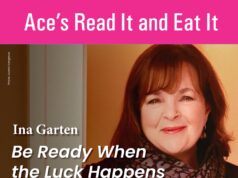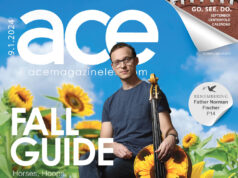Sowing Community Seeds: Professor Bibbs is a Pied Piper for the Arts in Lexington
By Todd Piccirilli
“The fruits of one’s labors” is just another cliche for most people. We go to our jobs everyday and in return receive our paychecks and the occasional pat on the back (if we’re lucky). Artist and UK art professor Garry Bibbs understands, though, the true meaning of the phrase.
For Bibbs, the reward is the labor itself. And while his artwork demonstrates talent across multiple mediums and has won him national recognition, Bibbs has bypassed the road to riches to pursue the realization that art is a means to educate and to bring a community together.
“I’ve come to notice how powerful the art medium can be,” says Bibbs. Of course, with power comes responsibility, a responsibility Bibbs eagerly accepts. Not only has he taken an active role in the community, but he’s intent on bringing the Lexington community together and making it better.
“I can bring arts to the community as well as help the community.”
One way he has already done this is through the piece TRU Passage. The work, which was commissioned by the Living Arts and Science Center, received grant funding in January of this year and the dedication ceremony took place in June. The importance of the piece, a metal sculpture consisting of two poles of masks bridged on the top by a Nike-like swoosh is that it was a project developed and created by Lexington youth.
Working with approximately six teens, Bibbs let the boys produce the concept and work on separate parts of the whole so that each one’s individuality could be expressed. In the end, according to Bibbs, the work became a tangible rite of passage and an important icon within the community. Thus the name: “T (ogether) R(uniting) U(nity) Passage.”
Marty Henton, director of the Living Arts and Science Center calls the work “a real positive project that reflects the characters of the kids with Bibbs’ influence.” Henton also adds, “I was real impressed with the way [he] reacted with the kids…he showed a lot of energy, enthusiasm, and support.”
Jack Gron, chair of the UK art Department and head of the sculpture area, also acknowledges the positive influence Bibbs has had on some Lexington youth and the community in general. “I’m glad to see him take an active role in the community,” says Gron. “He is a natural leader.”
Bibbs’ connection to Lexington goes back to the mid 80s when he was working under Gron as a graduate student. “He was an outstanding student and graduate assistant,” Gron recalls. “I knew then that his heart was in the right place.”
From there, he went to the Art Institute of Chicago on a Ford Post Doctoral Fellowship. While there, he was involved in Black on Black Love which allowed him to bring his art to and work with youth living in one of Chicago’s most crime-ridden housing project areas.
“I became like a Pied Piper to them because there was no positive entity in the projects,” Bibbs remarked. “This provided the foundation for my interests working with underprivileged kids and young black males.”
The return to Lexington in 1990 to be a professor at UK afforded Bibbs the opportunity to pursue his research interests as well as a career in education.
Despite the responsibilities of creating his own art and teaching art to others, Bibbs continues forthright with his efforts to improve the community. “Lexington has the potential to be an incredible city,” he says. However, he continues, “Today’s community is breaking down.”
The problem, as Bibbs sees it, is that “people have stopped using each others’ assets.” Bibbs sees the very essence of a community as the need to interact and depend on its individual members.
For him, the TRU Passage project was a step in the right direction because not only did it bring together some Lexington teens and educate them, but it brought many different parts of the Lexington community together as well.
Bibbs notes that the dedication ceremony for this one art project brought together people from the neighborhood, civic leaders, and many others, both young and old, who were interested in seeing what the project was all about.
Recently, Bibbs was selected to be a part of the Pew Civic Entrepreneur Initiative. This program is intended to help solve community issues.
Although it’s only in the early stages of its planning, Bibbs is very enthusiastic about the group and its purpose. According to Bibbs, he is one of 20 members selected who, together, represent the diversity of the Lexington community. They’ve come together to discuss such things as race relations and leadership. At a recent Pew conference, Bibbs said he learned that there are two different kinds of leaders — “those guarding the gate and those opening the gate.”
“In Lexington, too many leaders are guarding the gate,” Bibbs says.
Through his work with Pew and his art, Bibbs hopes to open those gates and bring the disparate parts of the community together. That is why he concentrates much of his artistic efforts on public art. “You’ve got to plant seeds and loosen people up,” said Bibbs. With public art, Bibbs feels he is planting seeds that will serve to bring the community together and get them interested in art again.
Although there is a service requirement for UK professors, what Garry Bibbs has done and continues to do goes well beyond those obligations.
While it is rare to find people willing to take the kind of initiative that Bibbs has, it is even more rare to find ones that live by Bibbs’ motto, “I never want to be rich, but I’m rich in what I’m doing.”






